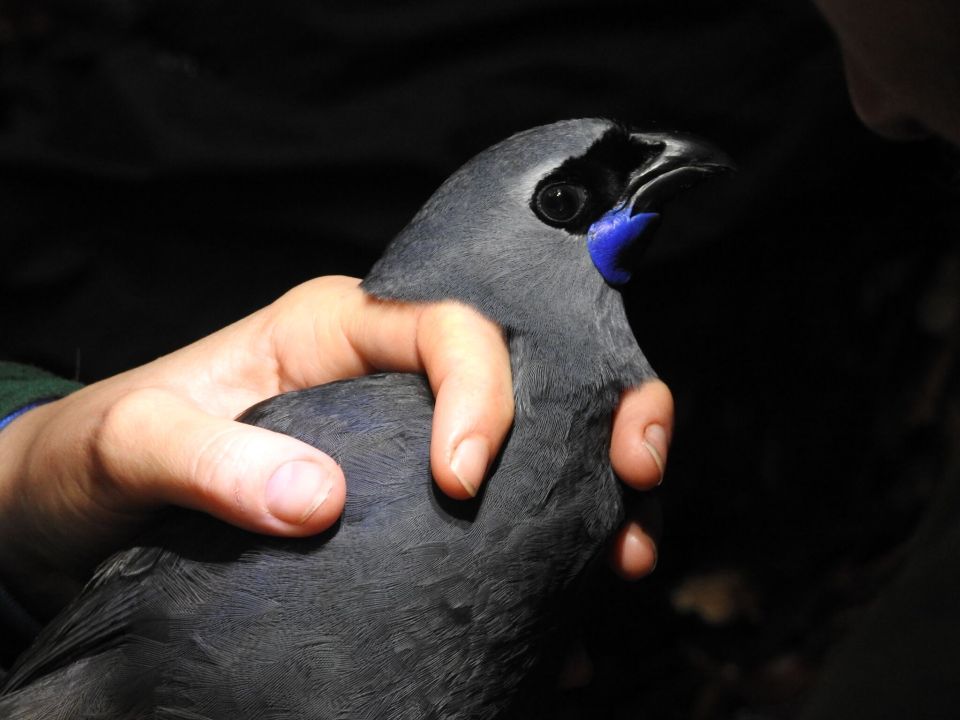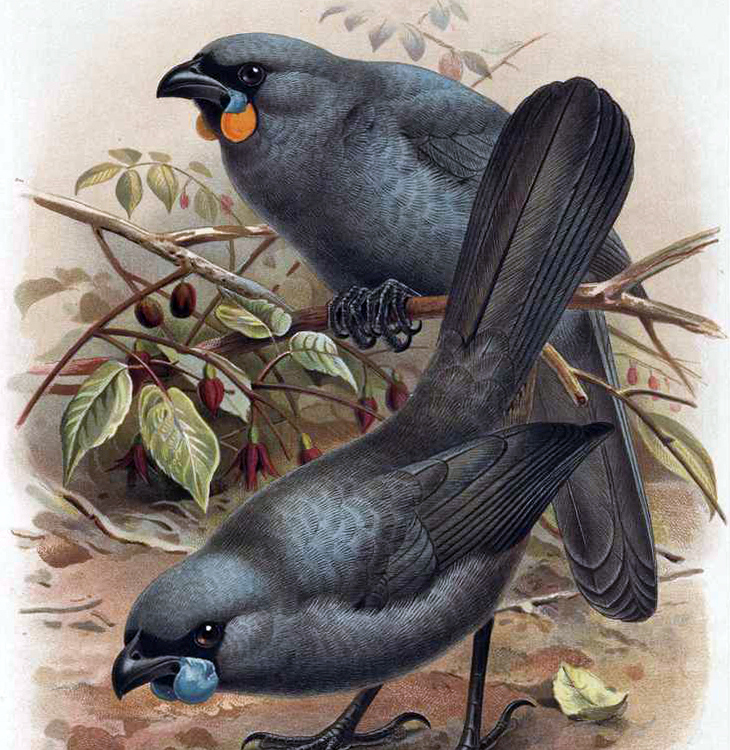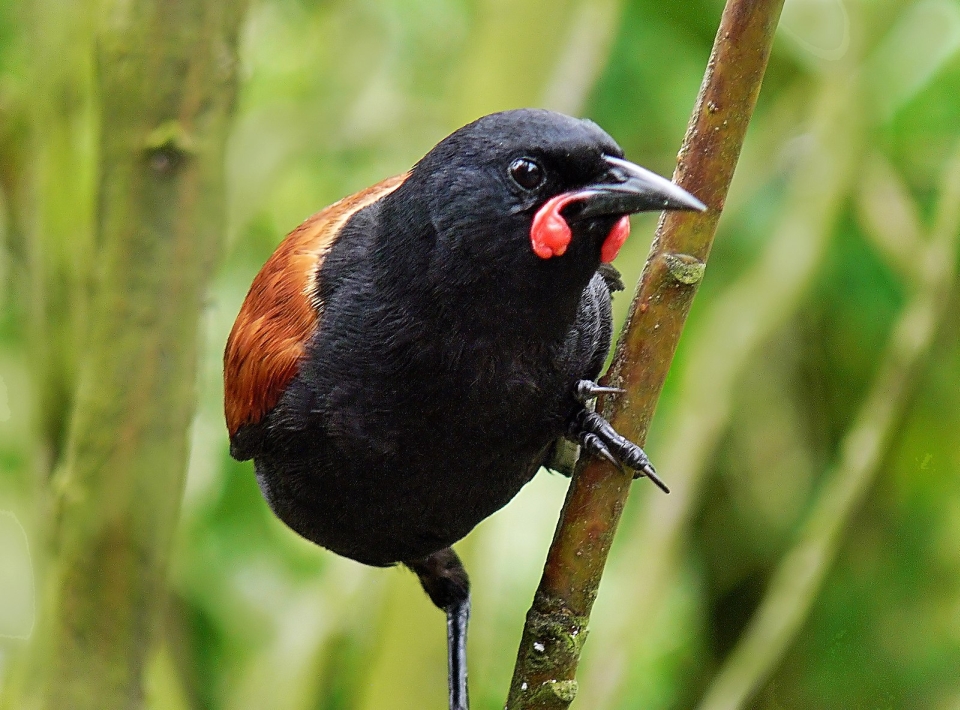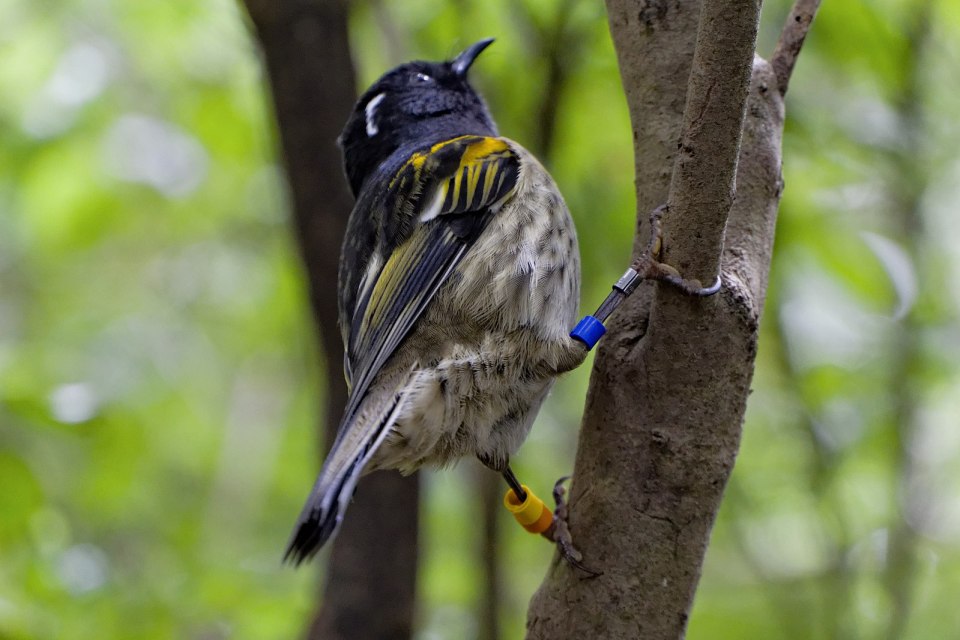Kōkako are wattlebirds with a haunting song.
There are two species of kōkako;
- North Island kōkako
- South Island kōkako.
There have been no recent sightings of South Island kōkako so it may now be extinct.
Other New Zealand wattlebirds are the rare saddleback and the extinct huia. These birds are only found in New Zealand.
Kōkako have been around for a very long time. Their ancestors include the stitchbird.
Kōkako are often heard rather than seen. Kōkako weigh around 230 grams and are around 38 centimetres in length.
Europeans called kōkako the blue-wattled or orange-wattled crow.
Kōkako have:
- long black legs
- a long tail
- a short, strong bill
- striking blue-grey feathers with a black ‘face mask’
- the North Island kōkako has blue wattles (fleshy pads hanging from each corner of the bill), while the South Island bird’s wattles were orange.
The grey ghost
The South Island kōkako is rarely seen, with the last sighting near Reefton in 2007. Some reports of its call or other signs give people hope of finding this bird but if it is not extinct it is close to extinction.
You can report any sightings on the South Island kōkako website
Magic song
The kōkako has one of the most beautiful songs. Kōkako from different places have different songs, and the birds respond less to kōkako from outside their home patch. South Island kōkako only called around breeding time, which has made it harder to find them.
Flight
Kōkako are poor flyers. Their short, rounded wings mean they can only glide up to 100 metres but they are very mobile. They move along tree branches from one level up to another, running and hopping on their long, strong legs. They are often compared to squirrels because of the way they hop and leap between trees.
Feeding 
Kōkako feed on different things in different seasons:
- During winter kōkako mainly eat leaves, fern fronds and some insects
- In spring kōkako feed more on nectar and leaf buds
- Over summer kōkako mainly eat fruit, moths, caterpillars, wētā and other insects
Breeding
When there is a lot of food, kōkako raise more than one brood of chicks a year. Nesting usually takes place from October to March. The female lays two or three pinkish-grey eggs, she sits on these eggs for 20 days. The male feeds her on or near the nest, and later both feed the chicks, which can fly after 30 to 45 days. Young birds will stay with their parents for between four and 12 months.
Young kōkako have pink wattles which slowly turn to bright blue wattles as they get older.
Complete the kōkako quiz >







